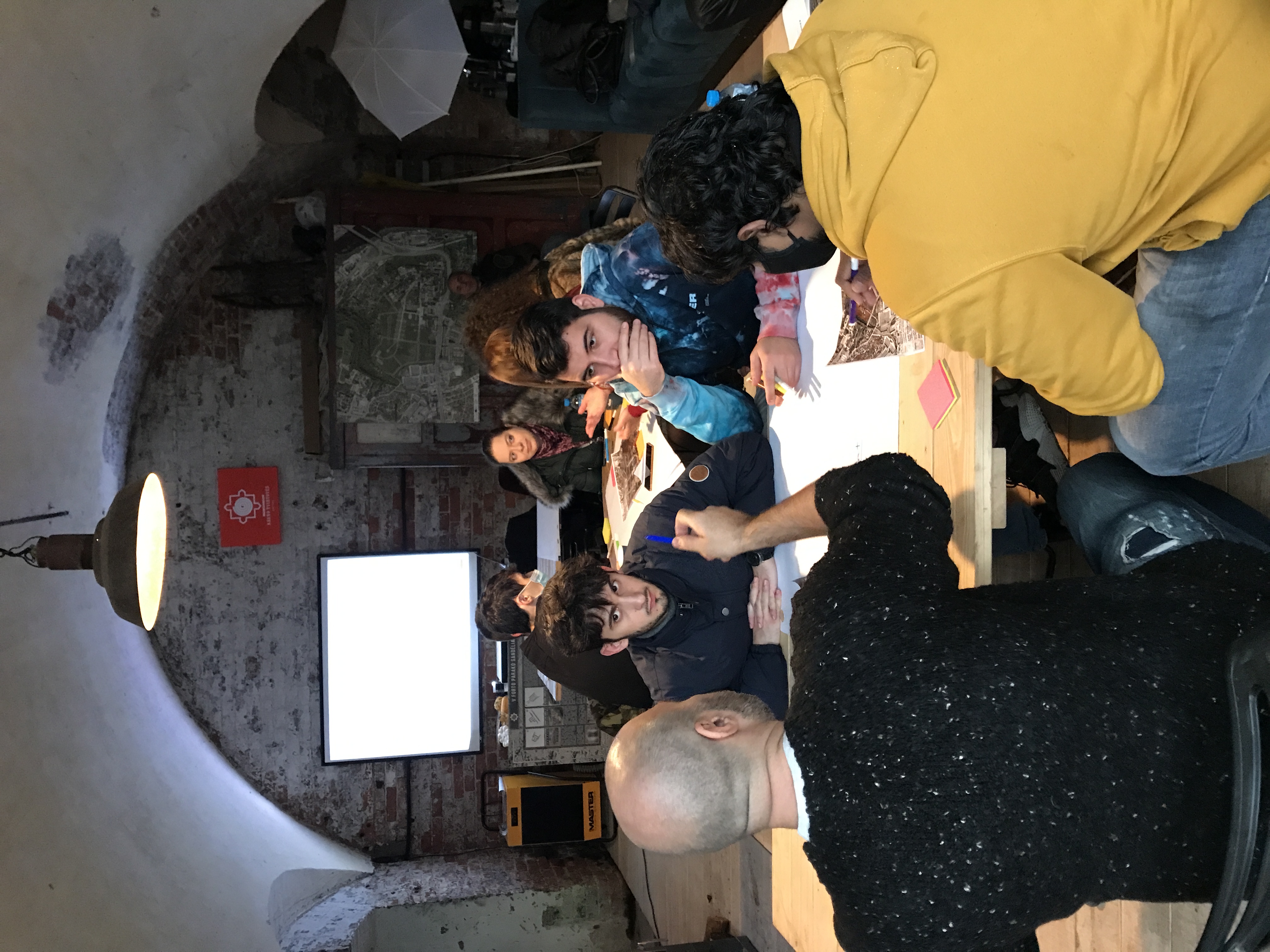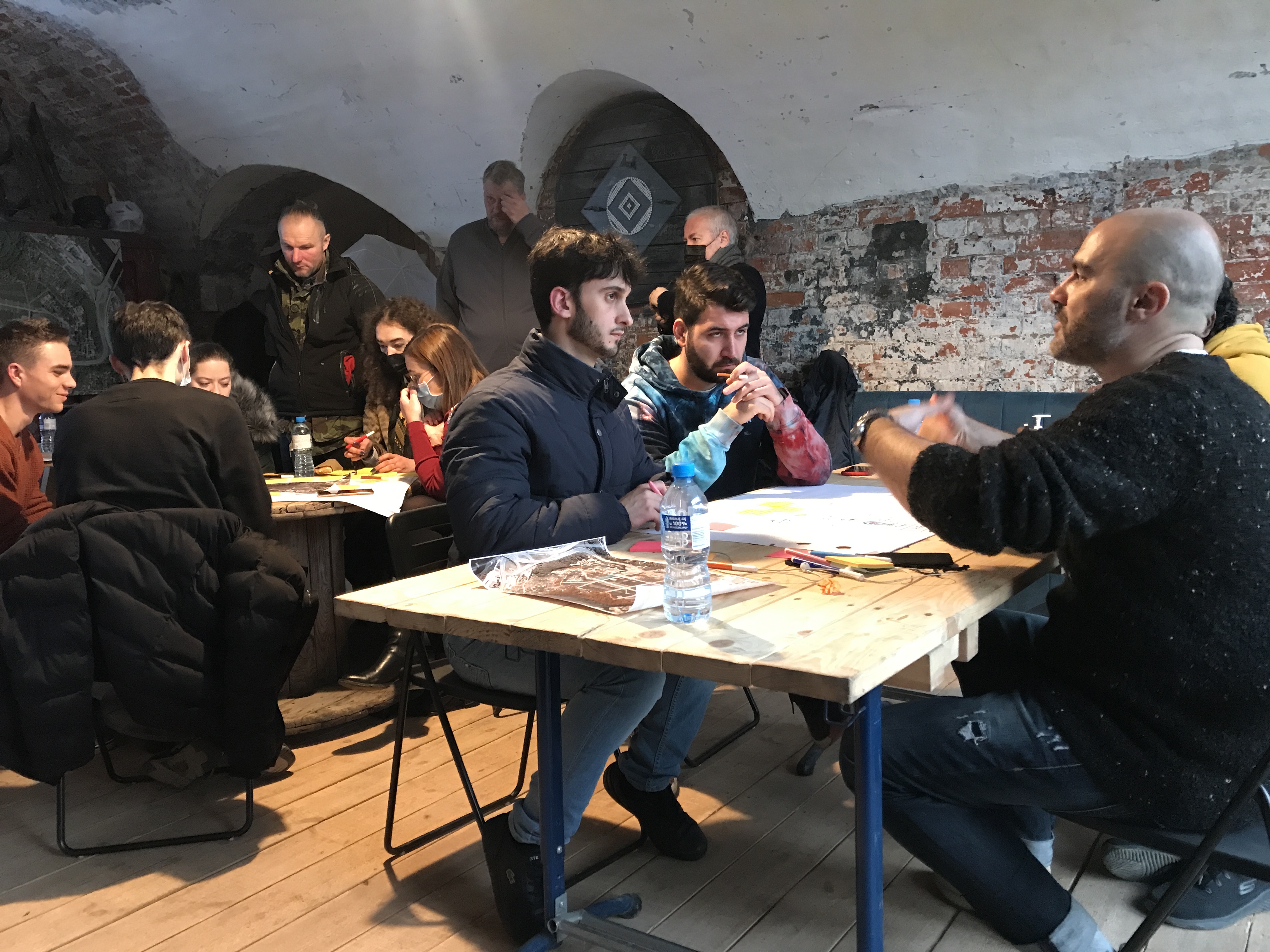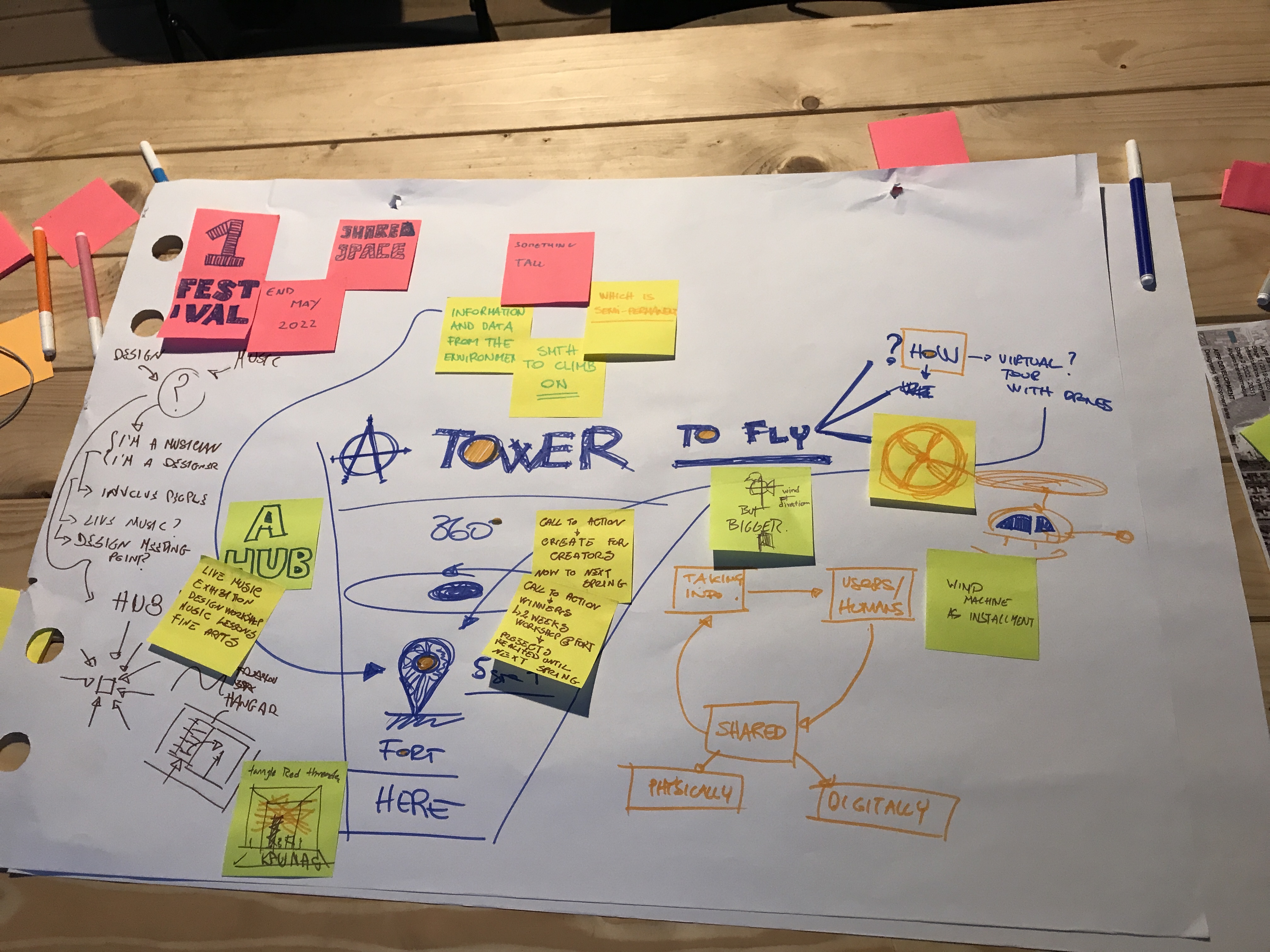“What would you do if you had an enormous empty space to fill in your city? The Extremely Vast and Incredibly Close Future workshop invites inhabitants of Aleksotas and Kaunas in imagining together how to use in the close future the site of the ancient military base that will host the Kaunas Innovation Park. The experiential city-making activity guide participants in discovering the area and voicing desires and challenges to ideate uses serving the community in the meanwhile time until the finalisation of the Innovation Park. Instead of focusing on fictional, far away futures that can spark imagination but rarely lead to applicable results, the workshop focuses on the close future, seeking to capture community demands. The data resulting from the workshop will be utilised for designing multiple digital models of the area that will illustrate the ideas that emerged and make it possible to integrate them in regeneration plans.”
Extremely Vast and Incredibly Close Future was a workshop organised by Marta Arniani in support to the Kaunas pilot. As a curatorial choice, the workshop focused on the near future, since because of their disconnection with the immediate reality, speculative futures can lead to engagement fatigue. Moreover, the local pilot team was seeking support for organising real activities as soon as possible. In light of this, the second curatorial choice was to provide an experience and not only an ideation workshop. In this way, the workshop could contribute to building the aesthetics of the site and lead participants to have active voice on it. The workshop consisted of three parts:
- Visit of the site guided by Egidijus Bagdonas, president of Kaunas Fortresses association
- Dream Room to spark imagination and reflection
- brainstorming workshop
The workshop led to identifying possible ways ahead for placemaking and the role of technology in it. Although one-time events emerged as the easiest and most engaging way to activate the space and open it to citizens, space accessibility and safety hurdles (which were raised by the Municipality representative) make digital and hybrid activities a promising route for animating the meanwhile. From the final discussion, it emerged how physical and digital activities must be complementary and not mutually exclusive. Indeed, any digitally-enabled experience should be seen as a way to augment possibilities and not as a parallel alternative world. We sketched how gaming could lead to experiencing the site through somebody else's eyes (e.g. of another gender, historical period, profession) and hence enhance social inclusion. Another possibility is to create an economy around the place that connects it with the rest of the city (e.g. virtuous actions compensated with tokens to be spent in public services). Finally, digital modelling could be a way to open up imagination (e.g. with Space Syntax modelling infrastructures and activities, their requirements and impacts). Concerning engagement, efforts should be concentrated in finding the right channels, incentives and storytelling to involve citizens, especially those located at the outskirts of AIIP.
Read the full workshop report by Marta!
Authors: Marta Arniani, Futuribile
- People and Planet-centred Innovation Ecosystem
Urban metaverse inclusive design principles
Where to start from for designing urban services and spaces in the metaverse? Follow these recommendations to ideate platforms that operate under a social justice lens.
Data Justice Workshop
Harvest citizen knowledge and create a bottom-up dataset about an urban regeneration area


